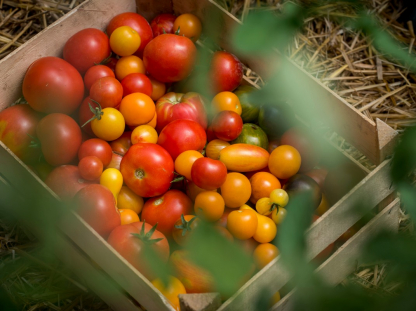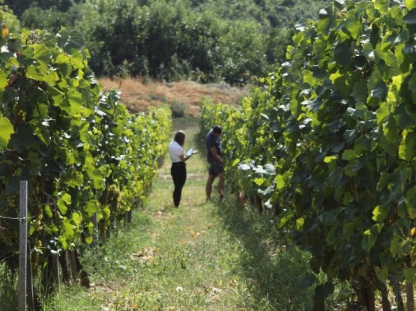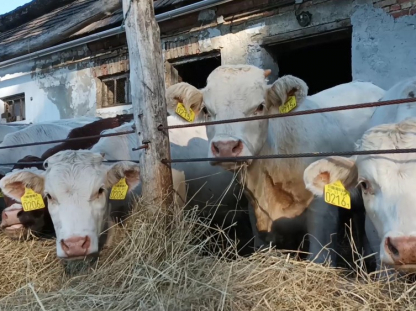Do we know the real cost of meat?
Although there is a huge difference in the impact of each food group on the environment and on climate change, this is not revealed in retail pricing.
Indeed, current food prices do not show the price we are really paying for a kilogram of meat or vegetables.
However, recent scientific findings now allow us to see how much the product price of each item on our grocery list should be raised in order to reflect its real cost, proportionate to the degree of climate damage associated with its production. Not surprisingly, the price increase would be greatest for meat.
Meat is very expensive from an environmental point of view.
It is a well-known fact that one of the most unsustainable habits of our modern society is the increasing consumption of meat, and of the large-scale animal husbandry, based on grain feed, that serves this demand. In terms of the share of greenhouse gas emissions (GHG emissions) from human activities, livestock farming alone is responsible for 14.5% of greenhouse gases, at least according to calculations by the renowned World Food and Agriculture Organization (FAO).[1] Another scientific analysis published in Science, which examined the entire food production process from cultivation through processing to point of sale, found that carbon emissions from the entire food production industry amounted to some 26% of total CO2 emissions.[2]
The above statistics are very telling, but regardless of the precise figures, it is a painful fact that the growing consumption of meat[3] in our modern society does indeed play a large role in climate change. And our current eating habits are a key part of the set of problems that cause climate change.
In addition, food consumption is an area where the role of the average consumer, i.e. our own responsibility, is undeniable. As such, what we eat and what we serve on the dinner table can no longer be a purely private matter.
Though a meat-rich dinner may not seem too expensive, climate change will cost a great deal. And the damage will be paid for by society as a whole, not least by our own children. Would it not be fairer for consumers who, even if unknowingly, eat in a climate-friendly way, to be less burdened with costs than those who follow a meat-loving diet?
Though it is relatively difficult to quantify in monetary terms the cost of greenhouse gas damage, according to a rate which is also used by the German Federal Environment Agency (UBA)[4] one tonne of greenhouse gas (GHG) emissions is currently equivalent to €180 worth of damage. However, due to the current steady rise in atmospheric CO2 levels and the increasing frequency of extreme weather events, these costs are not constant, and are soon projected to reach around €350/t CO2-eq.
Based on this ratio, and the prices from Germany used in the Nature article, the additional cost of climate damage for meat would be €2.41/kg (for both conventional and organic meat). This additional cost means a price increase of 46% if we take the price of meat as €5.23/kg.
Although it is surprising that meat from organic farming does not fare better in terms of CO2 emissions than its large-scale counterparts, it would be wrong to conclude on this basis that organic is not sustainable. The benefits of organic farming are unquestionable in terms of animal welfare, health, soil protection and ecology, even if the climate-affecting gas emissions of free-range animals are no lower than those of industrial animals.
However, the most important aspect of the cited research is not the absolute value, but the difference between meat-based and plant-based foods, because the climate impact of meat-based food is at least sixty times greater!
In the case of food of plant origin, the additional cost, after factoring in climate impact, would only be between €0.04 and €0.02/kg.
Using this conversion, the consumption of 1kg of meat thus causes 880 forints (approx. €2.40) worth of climate damage. For products of plant origin, this value is on average 14 forints (€0.04) per kilogram, or even lower (7.5 forints or €0.02) if it is an organically farmed plant product.
This extra cost is, of course, theoretical, and without real, socially based economic distinctions, it would not achieve its aims. However, it is useful as a means of comparison, to make the problem more clearly visible.
Would this type of price increase be more effective than voluntary initiatives? Would it achieve its true goal? It is hard to say.
However, anyone unwilling to wait for the regulations advocated by the research quoted above – to include the climate impact in the cost of different types of food – should simply eat less meat, preferably from sustainable farming, and have at least one meat-free day a week! That alone can make a big difference!
Dr. Fruzsina Szira, Hungarian Research Institute of Organic Agriculture
[1] The most important greenhouse gases (GHGs) are carbon dioxide, methane, nitrous oxide, ozone, and halogenated and fluorinated hydrocarbons. The various greenhouse gases are usually converted to carbon dioxide equivalent (CO2-eq) and are thus listed in each analysis. According to a 2013 FAO analysis based on 2005 reference data, total anthropogenic GHG emissions are 49 Gigatons (Gt) CO2-eq, of which livestock emissions are 7.1 Gt.
[2] According to the Science edition published in 2018, total anthropogenic GHG emission amount to 52.3 Gt CO2-eq, of which emissions related to food supply are 13.7 Gt CO2-eq.
[3] According to the data of the CSO, the amount of meat consumption per capita in Hungary increased by 10kg between 2010 and 2016. On an annual basis, we consume 66kg of meat, or 200 g per day per capita, and in addition, the average percentage of that meat eaten in a processed form is also increasing. Taken together with our current lifestyles, this is damaging not only to the environment but also to our health.
[4] Pieper, M., Michalke, A. & Gaugler, T. Calculation of external climate costs for food highlights inadequate pricing of animal products. Nat Commun 11, 6117 (2020). https://doi.org/10.1038/s41467-020-19474-6
Cover photo: unsplash.com








